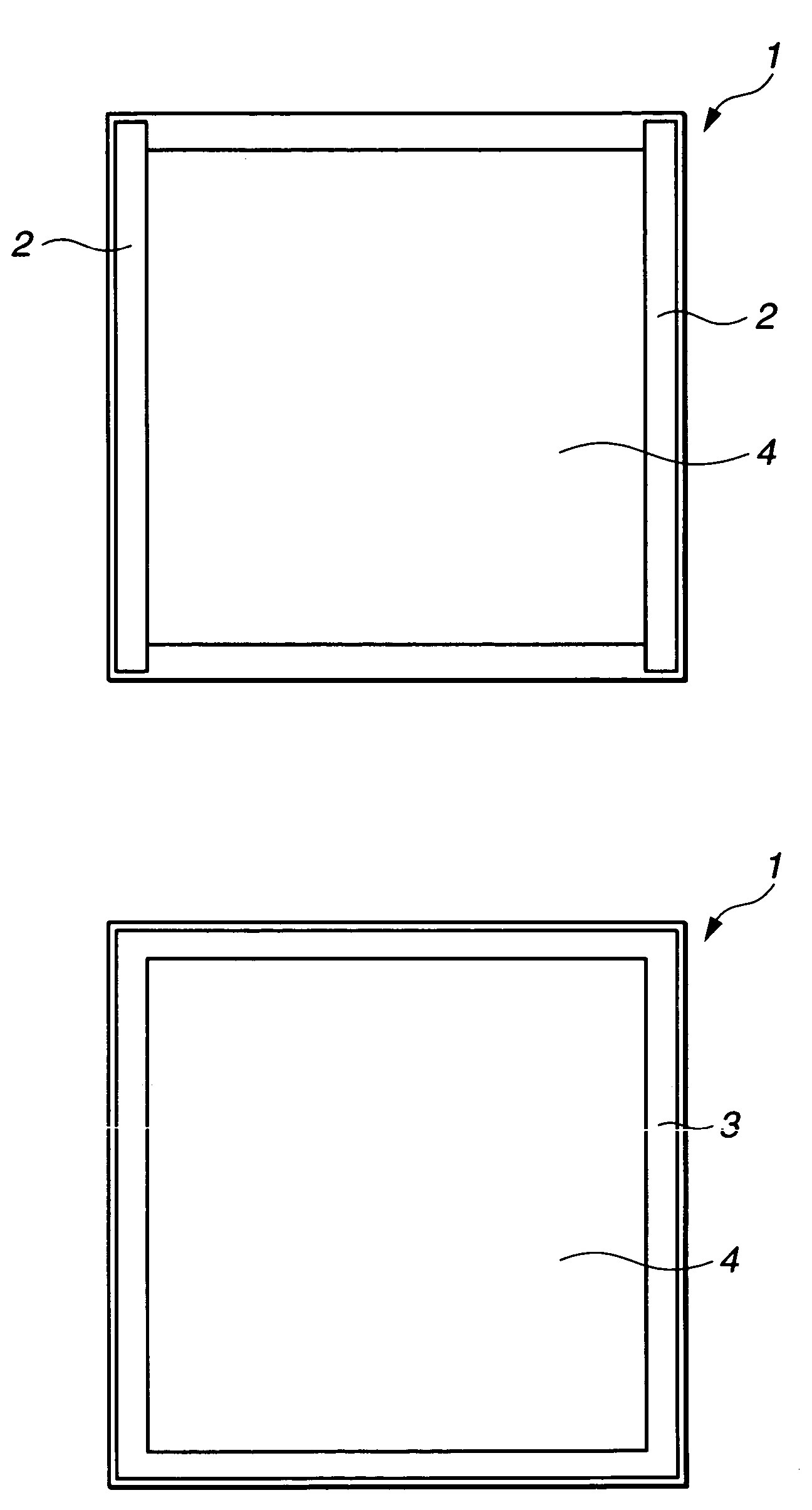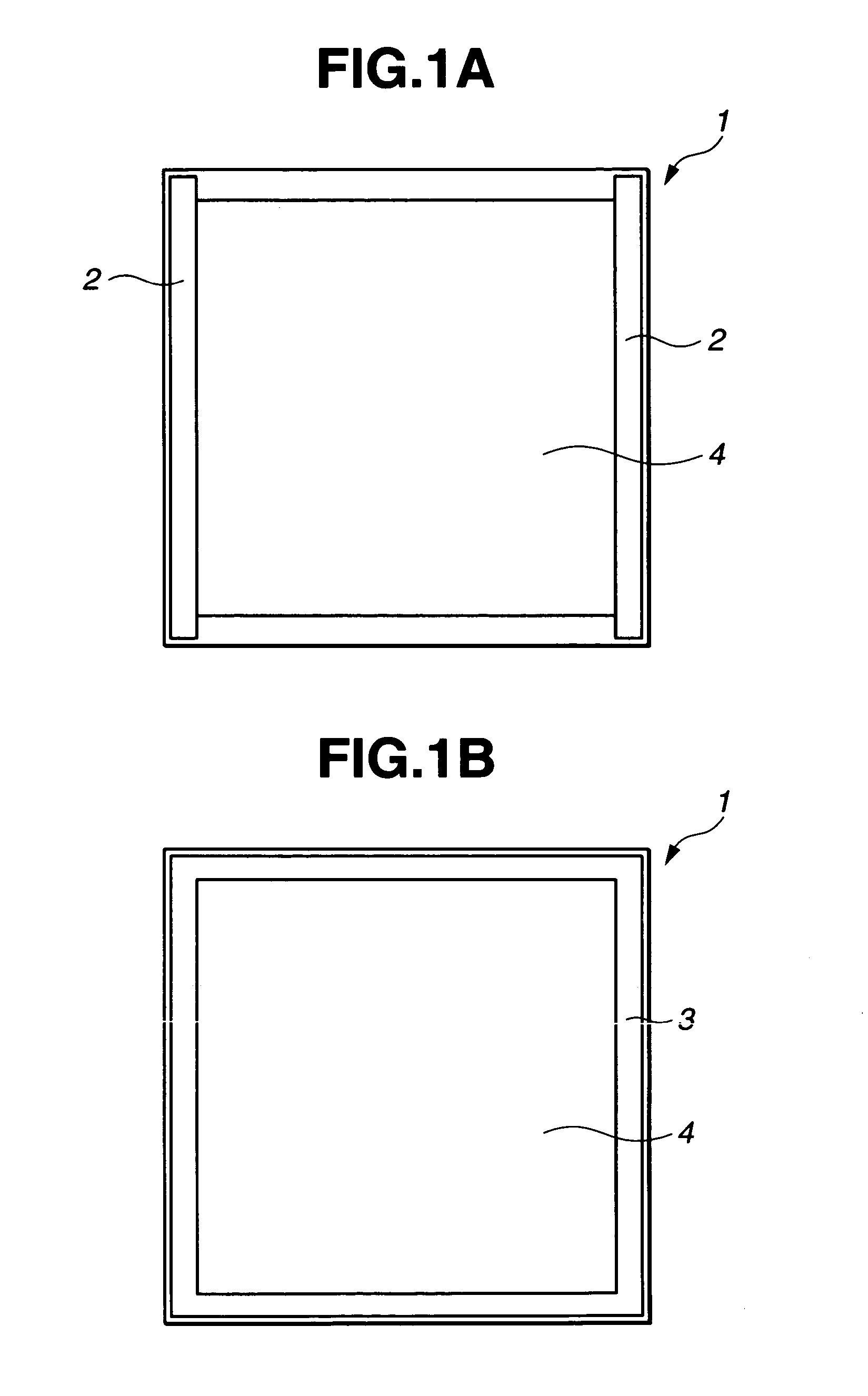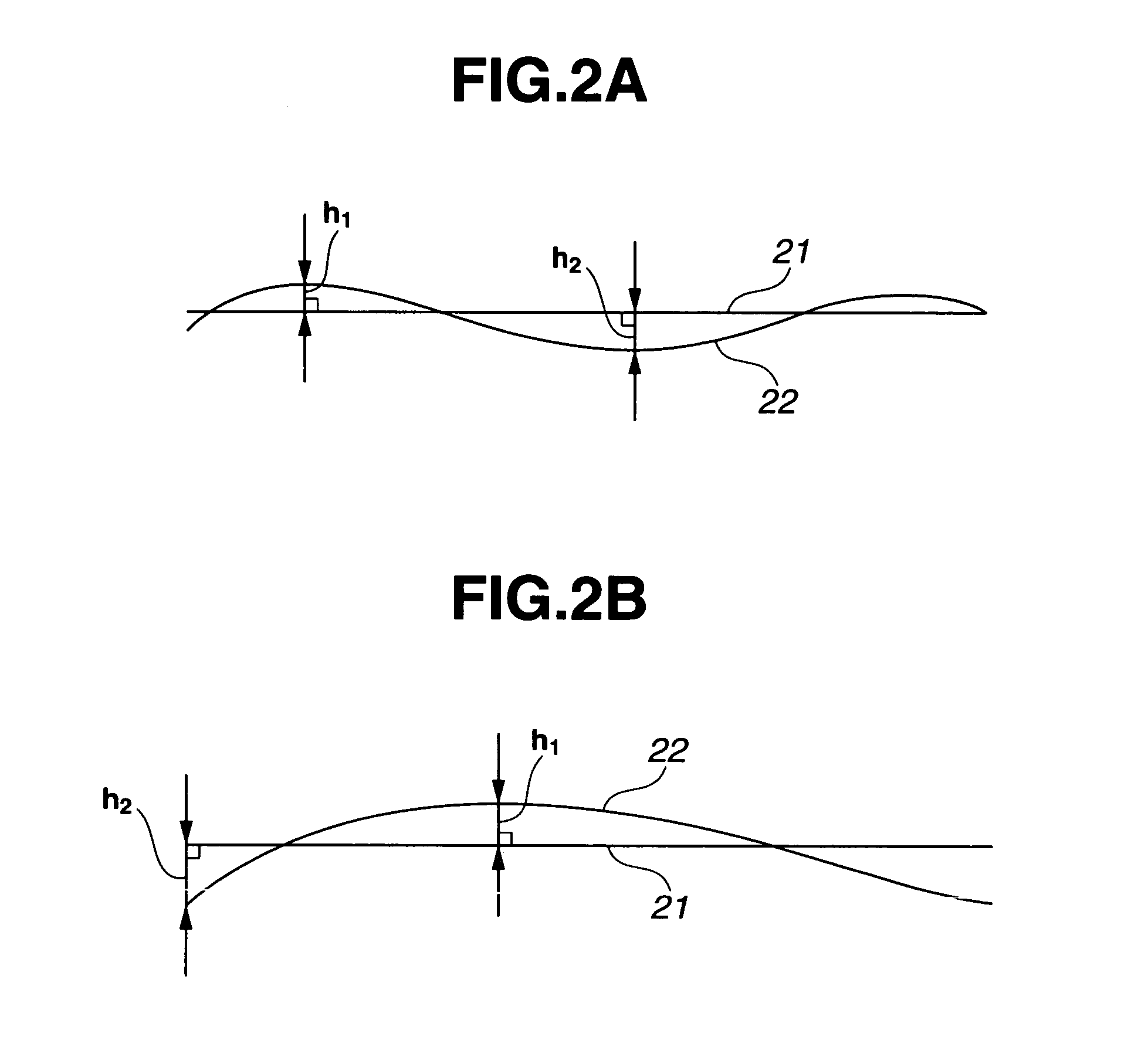Photomask blank substrate, photomask blank and photomask
a technology of photomask and substrate, applied in the field of photomask blank substrate, photomask blank and photomask, can solve the problems of reducing the accuracy of photolithographic process used in semiconductor manufacturing, affecting the accuracy of photolithographic process, and the inability to ignore the flatness of the substrate as a cause of focal shift, so as to reduce the minimum feature size and high accuracy
- Summary
- Abstract
- Description
- Claims
- Application Information
AI Technical Summary
Benefits of technology
Problems solved by technology
Method used
Image
Examples
first embodiment
[0035]The photomask blank substrate in the first embodiment of the invention is described.
[0036]The photomask blank substrate in the first embodiment is a substrate which is quadrangular and has a length on each side of at least 6 inches. The substrate has a top surface on which a mask pattern is to be formed. A pair of strip-like regions extend from 2 to 10 mm inside each of a pair of opposing sides along an outer periphery of the substrate top surface, with a 2 mm edge portion excluded at each end in a lengthwise direction thereof. Each of the strip-like regions is inclined downward toward the outer periphery of the substrate. A difference between maximum and minimum values for height from a least squares plane for the strip-like regions on the substrate top surface to the strip-like regions themselves is at most 0.5 μm.
[0037]The term “strip-like region” as used herein is explained below while referring to FIG. 1A, which shows the substrate top surface 1 on which a suitable film s...
second embodiment
[0041]The photomask blank substrate in the second embodiment of the invention is described.
[0042]The photomask blank substrate in the second embodiment is a substrate which is quadrangular and has a length on each side of at least 6 inches. The substrate has a top surface on which a mask pattern is to be formed. A quadrangular ring-shaped region extends from 2 to 10 mm within each side along an outer periphery of the substrate top surface. The quadrangular ring-shaped region is inclined downward toward the outer periphery of the substrate. A difference between maximum and minimum values for height from a least squares plane for the quadrangular ring-shaped region on the substrate top surface to the quadrangular ring-shaped region itself is at most 0.5 μm.
[0043]The term “quadrangular ring-shaped region” as used herein is explained below while referring to FIG. 1B, which shows the substrate top surface 1 on which a suitable film such as a film having light-shielding properties, or a f...
third embodiments
[0050]The photomask blank substrate in the third embodiment of the invention is described.
[0051]The photomask blank substrate in the third embodiment is a substrate which is quadrangular and has a length on each side of at least 6 inches. The substrate has a top surface on which a mask pattern is to be formed. A quadrangular ring-shaped region extends from 2 to 10 mm within each side along an outer periphery of the substrate top surface. When a least squares plane for the quadrangular ring-shaped region on the substrate top surface is considered a reference plane, and a circle having a center at the center of the substrate is drawn on the reference plane so as to traverse the reference plane, a difference between maximum and minimum values for height from the reference plane to the quadrangular ring-shaped region, taken in an arcuate portion passing the reference plane, is at most 0.3 μm.
[0052]The term “quadrangular ring-shaped region” as used herein is explained below while referri...
PUM
| Property | Measurement | Unit |
|---|---|---|
| height | aaaaa | aaaaa |
| height | aaaaa | aaaaa |
| length | aaaaa | aaaaa |
Abstract
Description
Claims
Application Information
 Login to View More
Login to View More - R&D
- Intellectual Property
- Life Sciences
- Materials
- Tech Scout
- Unparalleled Data Quality
- Higher Quality Content
- 60% Fewer Hallucinations
Browse by: Latest US Patents, China's latest patents, Technical Efficacy Thesaurus, Application Domain, Technology Topic, Popular Technical Reports.
© 2025 PatSnap. All rights reserved.Legal|Privacy policy|Modern Slavery Act Transparency Statement|Sitemap|About US| Contact US: help@patsnap.com



